As one of the oldest continually inhabited areas in North America, Tucson has a wealth of history, from the prehistoric Hohokam society that lived along the Santa Cruz River to Spanish settlers that formed “the Old Pueblo.” The city is heaving with museums and art galleries depicting the city’s historical and cultural influences. Still, there’s also a very modern side to Tucson with a thriving food, spa, sports, and shopping scene.
Tucson is famous for its natural beauty, with Saguaro National Park and Catalina State Park just a short drive away. Marvel at the sheer size of giant saguaros and hike in search of waterfalls at Sabino Canyon. With 350+ days of sunshine, Tucson is the perfect outdoor adventure playground for explorers.
The Best Free Things To Do in Tucson
1. Discover Historic Sights Along the Turquoise Trail
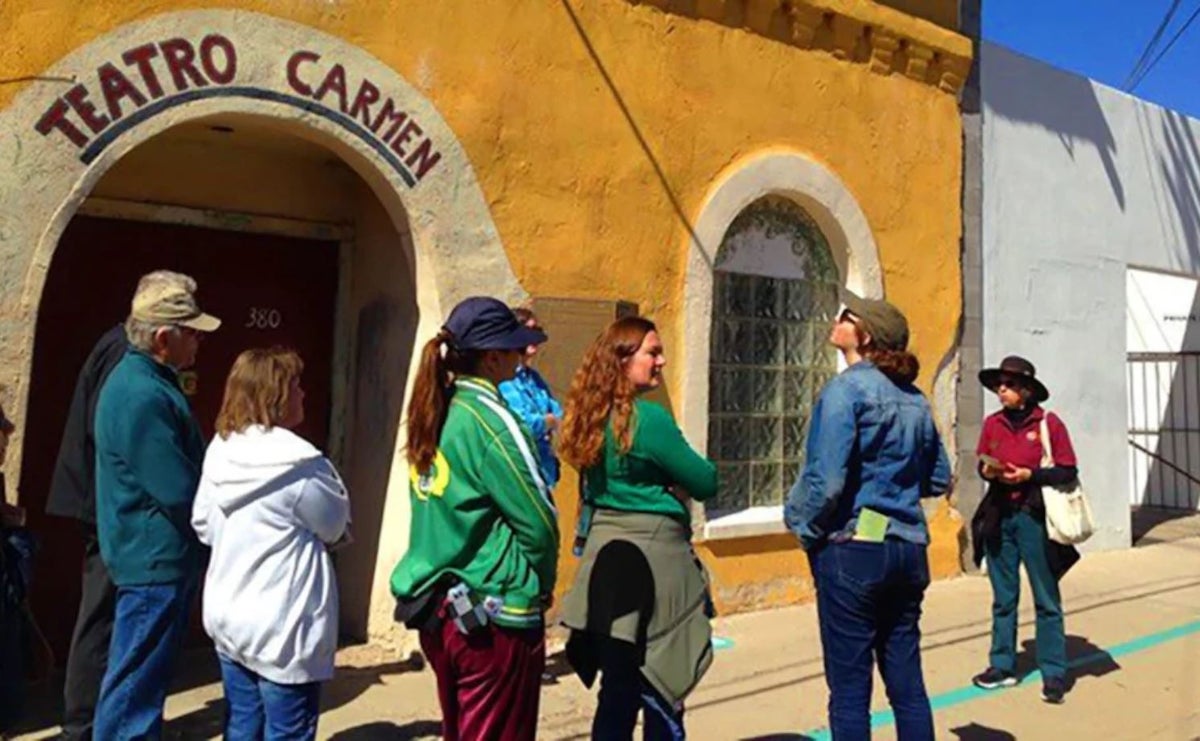
Enjoy a self-guided tour of the Turquoise Trail that guides visitors for 2.5 miles through the heart of downtown Tucson. The turquoise-colored line will take you past 23 notable sites, including the Pima County Courthouse, Hotel Congress, Armory Park, Fox Tucson Theatre, and plaques that provide useful information about each site along the way. Walking brochures are also available at the AC Marriott Hotel, Hotel Congress, Presidio Museum, and Visit Tucson Visitors Center, or you can join a docent-led walking tour to be guided by a local expert.
Hot Tip: For directions and information about each attraction along the Turquoise Trail, check out the Vamonde website and app (iOS, Android) that uses GPS to guide your tour.
2. Admire Spanish Colonial Architecture at San Xavier del Bac Mission
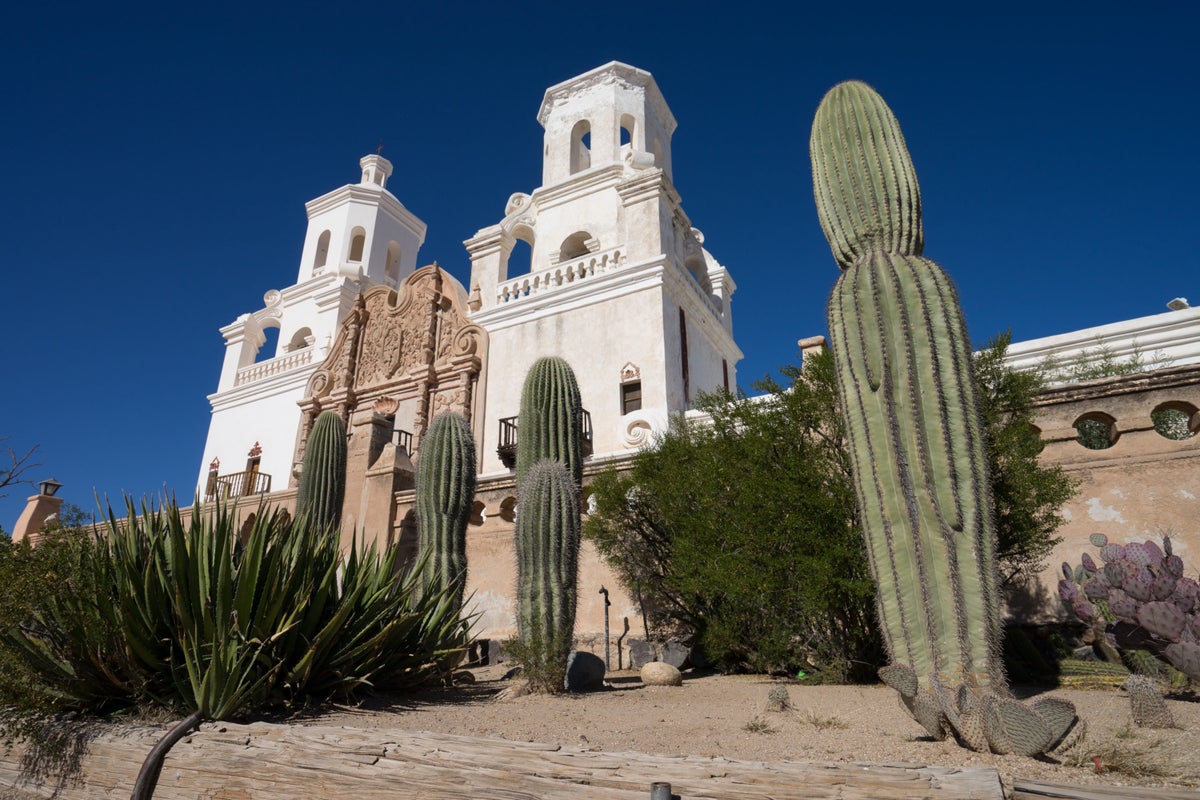
The church of San Xavier del Bac was built between 1783 and 1797 and is a beautiful representation of 18th-century Spanish Colonial architecture. The “White Dove of the Desert,” as it is also known, was constructed from clay brick, stone, and lime mortar and had magnificent vaulted ceilings uncommon with Spanish Colonial buildings. The mission is an active church that welcomes visitors, and if you want to find out more about its history, join one of the free tours that run at various times of the day, Monday through Saturday.
3. See the Best Views of Downtown From Sentinel Peak
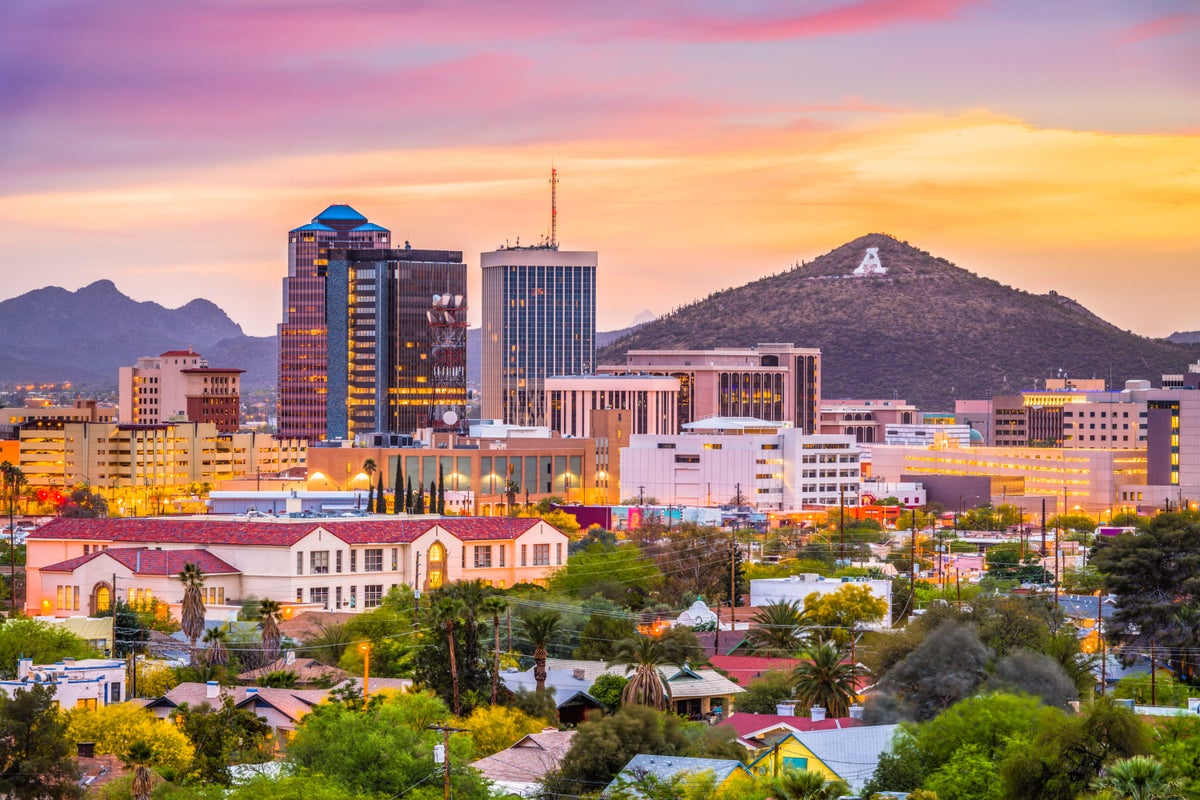
If you’re after the best views of Tucson, head to Sentinel Peak, located west of downtown. You can’t miss it, with a huge “A” marked on the side of the mountain that was constructed from basalt rock in the early 20th century by a team of university students. You can drive, hike, or cycle to the summit with parking available and several trails up the mountain.
4. Have a Picnic on the Edge of Lake Kennedy

Kennedy Park is located southwest of downtown Tucson and has various trails leading into Tucson Mountain Park. Within the park is an urban lake that’s popular for fishing catfish, trout, and bass, so you might see some visitors proudly displaying their catch. Shaded picnic areas and a children’s playground make the park a great spot for families, and although swimming in the lake isn’t permitted, there’s also a swimming pool.
5. Tour the Cathedral of Saint Augustine
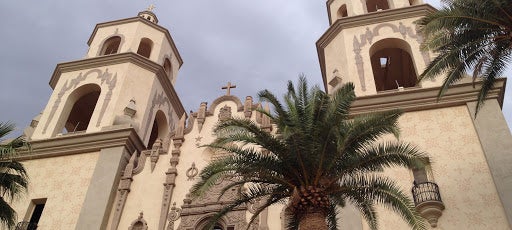
The Cathedral of Saint Augustine is a magnificent building located close to downtown and is the mother church to the Roman Catholic Diocese of Tucson. The architecture was inspired by Mexico’s Cathedral of Querétaro and is an example of the Mexican Baroque style with its cast stone façade. Admire the beautiful exterior of the building, join for mass, or learn about the history of the cathedral by joining a tour.
6. Experience the Wild West With a Trip to Tombstone
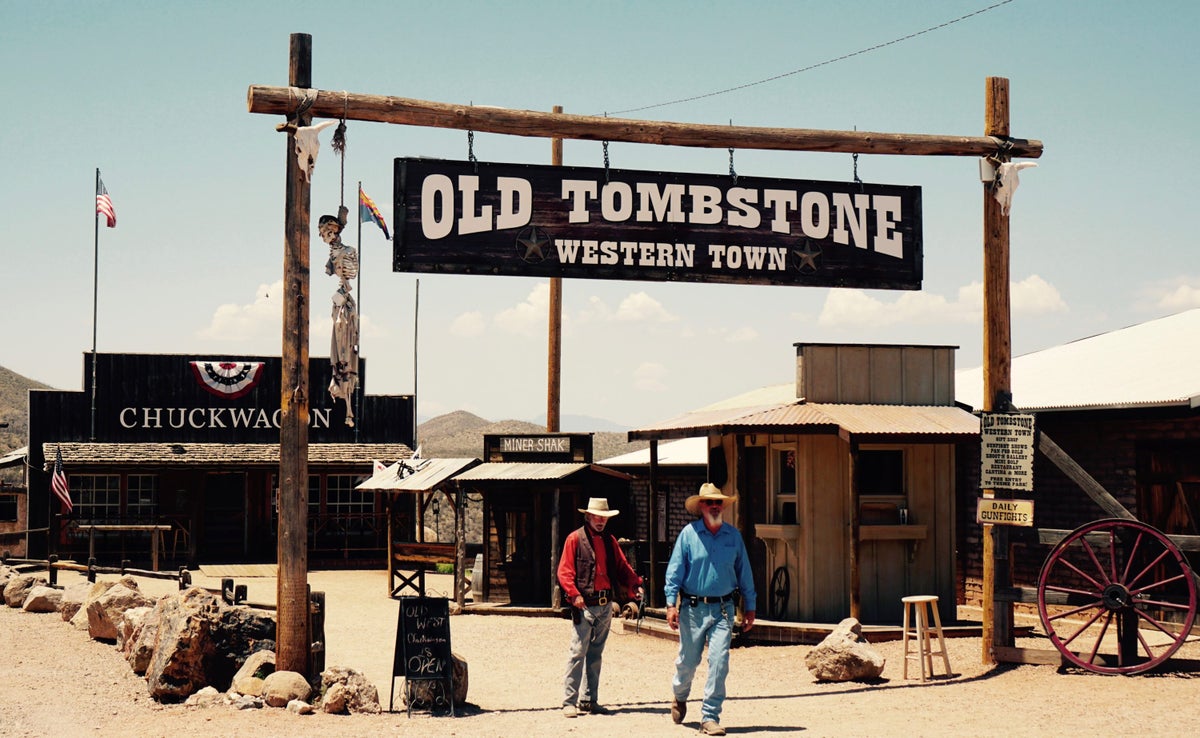
Experience the wild west with a trip to Tombstone — one of the most authentic western towns in the U.S. Take a trolley tour or ride a stagecoach as you explore old saloon and adobe buildings. Tombstone was a boomtown during the mid-1880s due to its high production of silver, and you can visit a historic silver mine to experience what it would have been like to work underground. Don’t miss the gunfight reenactment at O.K. Corral to learn about Wyatt Earp and Doc Holliday’s notorious showdown against a group of outlaws.
Hot Tip: If you’re planning to rent a car to get around Tucson and the outer city attractions, check out our article on the best car rental companies.
The Best Outdoor Adventures and Activities in Tucson
7. Go in Search of Waterfalls in Sabino Canyon
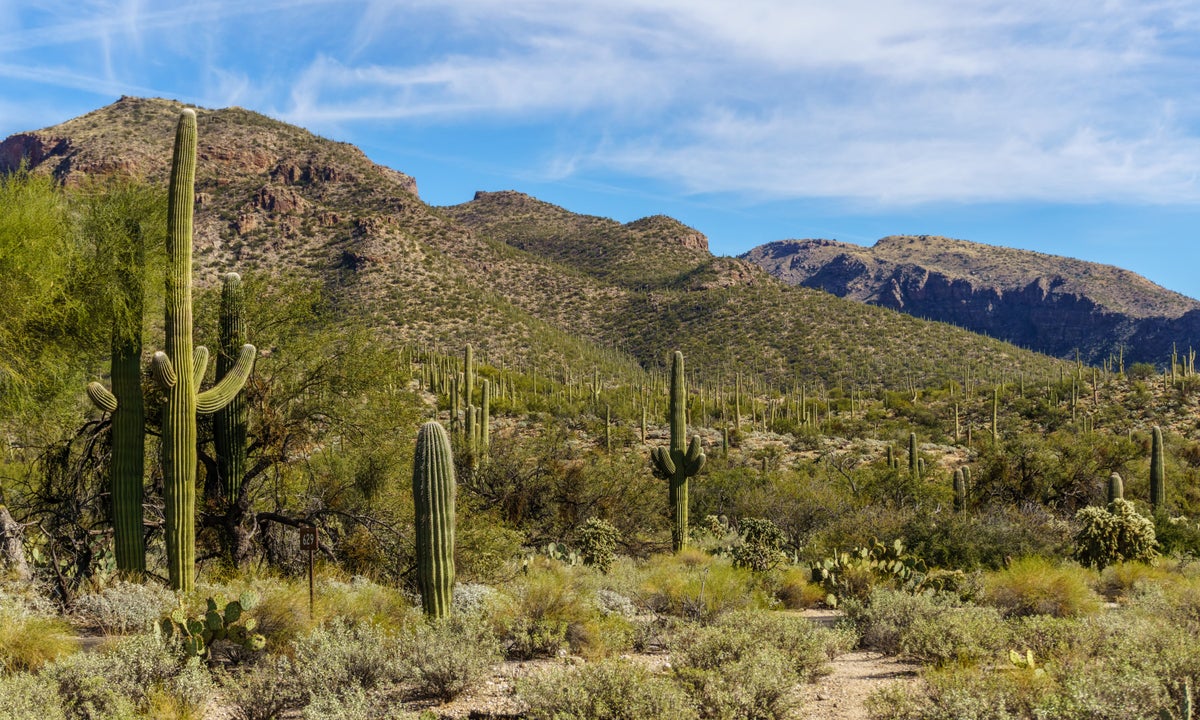
Located 12 miles from downtown Tucson, Sabino Canyon is a popular day trip for hikers with miles of trails of varying difficulties. You have the option to ride the electric shuttle from the parking area along 2 routes. The Upper Sabino Canyon Shuttle is a 1-hour narrated journey with 9 stops to access various trailheads or the Bear Canyon Shuttle has just 3 stops en route to the Seven Falls trailhead. Enjoy the beautiful scenery, keep a lookout for wildlife ranging from lizards to rattlesnakes, and cool off from your hike in one of the many waterfalls that flow intermittently throughout the year.
8. Enjoy the Beauty of Tucson Botanical Gardens
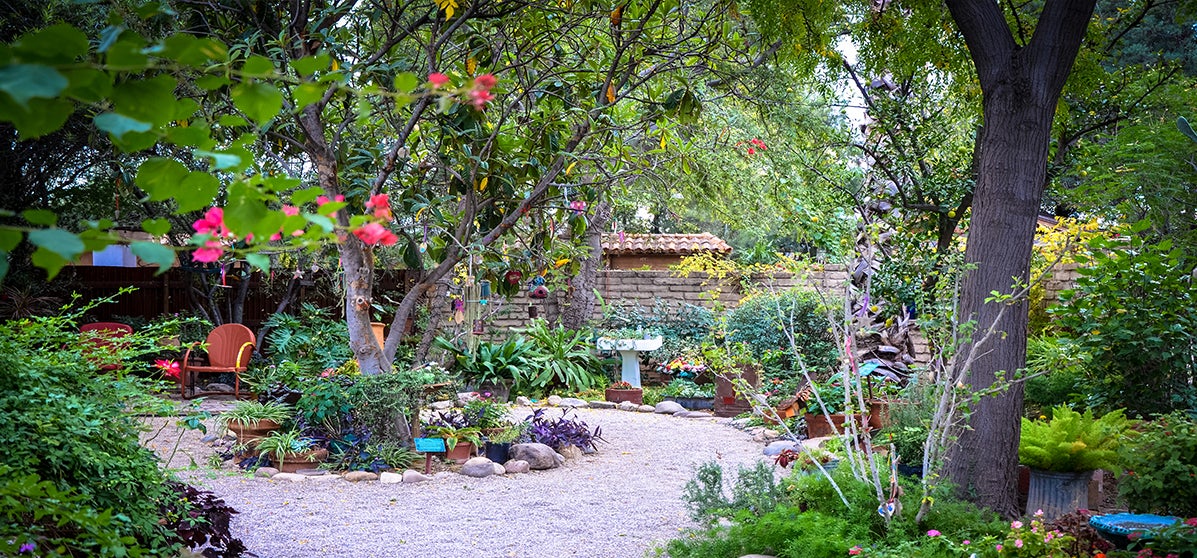
Tucson Botanical Gardens is an oasis in the middle of the city, originally a private garden for horticultural enthusiasts Rutger and Bernice Porter. Across 5.5 acres, 17 specialty gardens display native and exotic plants, including the Cactus and Succulent Garden, the fragrant Herb Garden, and the Pollinator Garden, with plants attracting pollinating insects and birds. As you stroll through the Cox Butterfly & Orchid Pavilion, you may find a butterfly on your shoulder as it mistakes you for a colorful hibiscus or orchid.
9. Drive or Hike Through Saguaro National Park
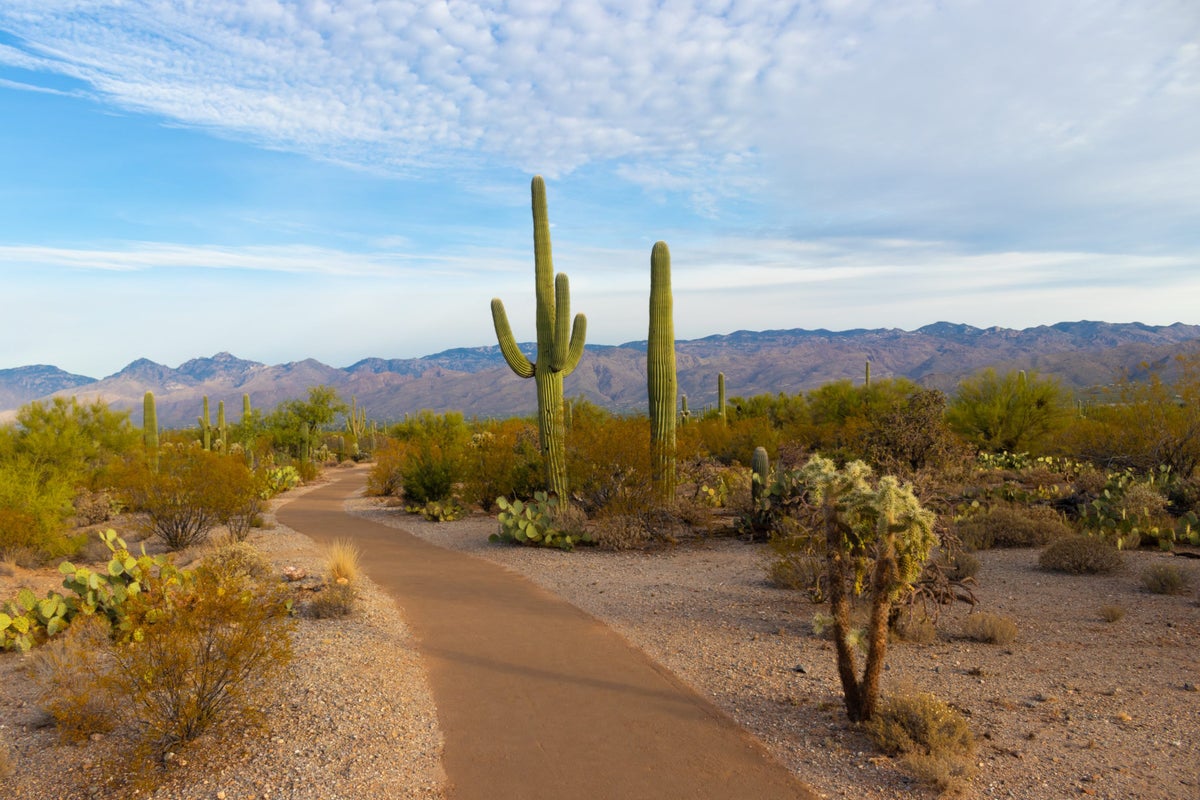
Saguaro National Park consists of 2 areas on either side of the city. East of Tucson is the Rincon Mountain District, and to the west is the Tuscan Mountain District. You’ll see the district giant cactus that Arizona is famous for in both areas, but the Rincon Mountain District mainly consists of backcountry hiking trails. If you’re looking for the opportunity to explore by car and foot, visit the Tuscon Mountain Range, where there are some great scenic drives and varied trails.
Hot Tip: Planning to explore Saguaro National Park by foot? Make sure a good pair of hiking boots to handle the varied terrain.
10. Enjoy the Great Outdoors on Mount Lemmon
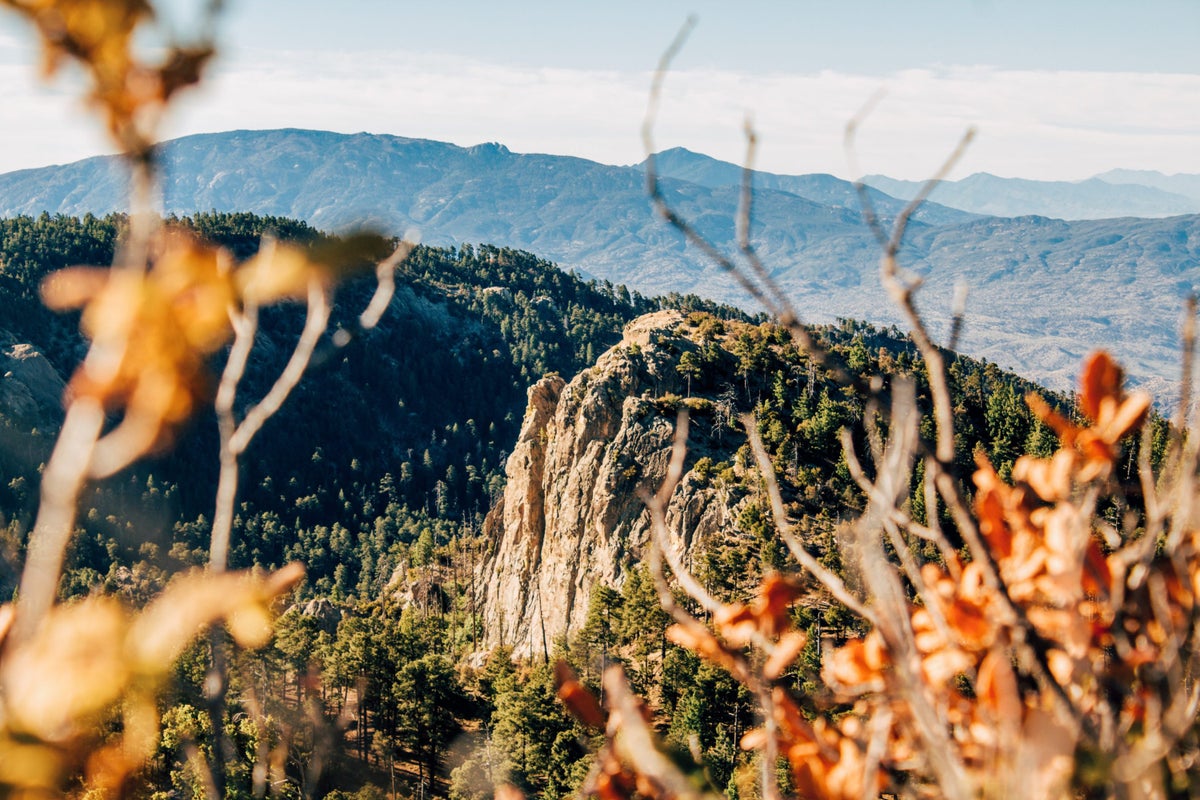
At 9,159 feet, Mount Lemmon is the highest peak of the Santa Catalina Mountains. It’s a great day trip or a weekend break from Tucson for hiking, biking, camping, and skiing in the winter. Enjoy the scenic drive up the Catalina Highway, where you’ll find various picnic areas and trailheads. The area has an observatory and is known for its particularly dark sky, so you might want to take advantage of several campsites to sleep under the stars.
11. Zipline High Above the Sonoran Desert
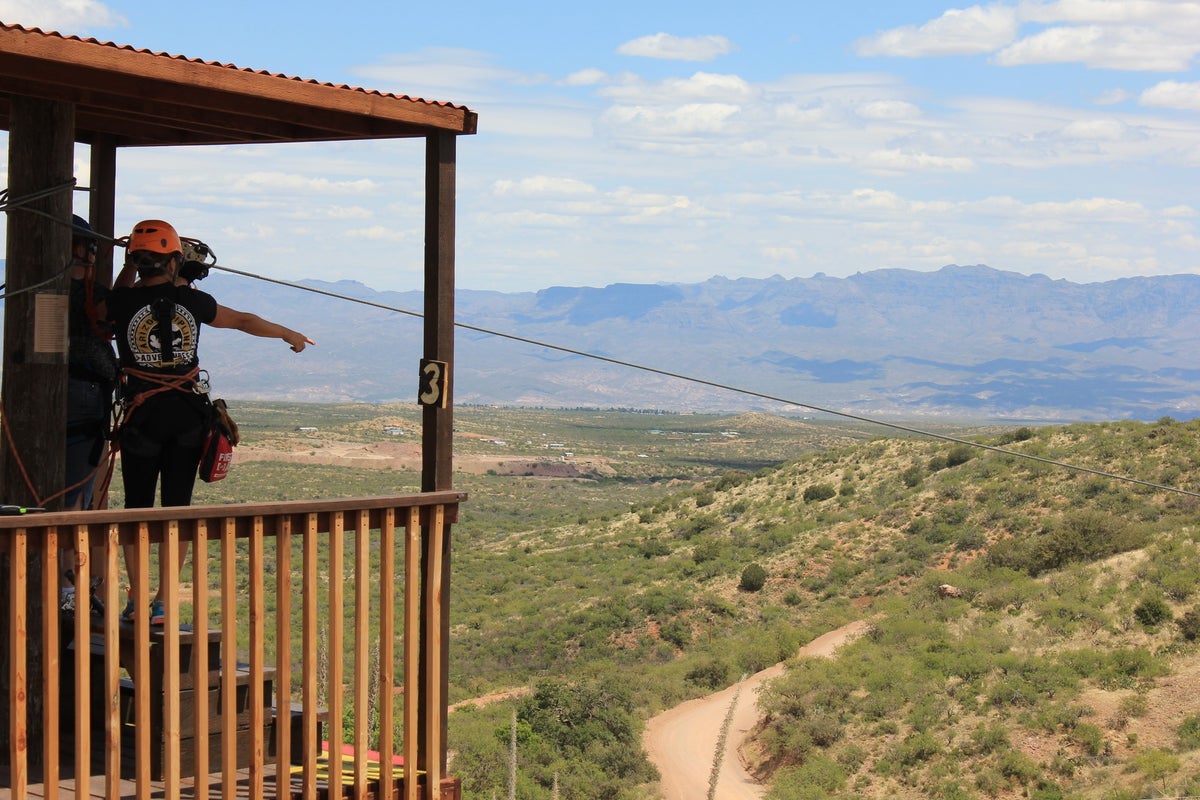
Admire fantastic views of the San Pedro Valley and the Galiuro Mountains as you fly over the beautiful landscape on an exhilarating zipline adventure. Choose to ride during the day, at sunset, or even under the stars at night with headlamps and glow sticks (available spring and fall).
Hot Tip: Capture all the thrills to watch back for years to come with an action camera attached to your helmet or wrist.
The Best Museums and Attractions in Tucson
12. Explore Outdoor Exhibits at the Arizona-Sonora Desert Museum
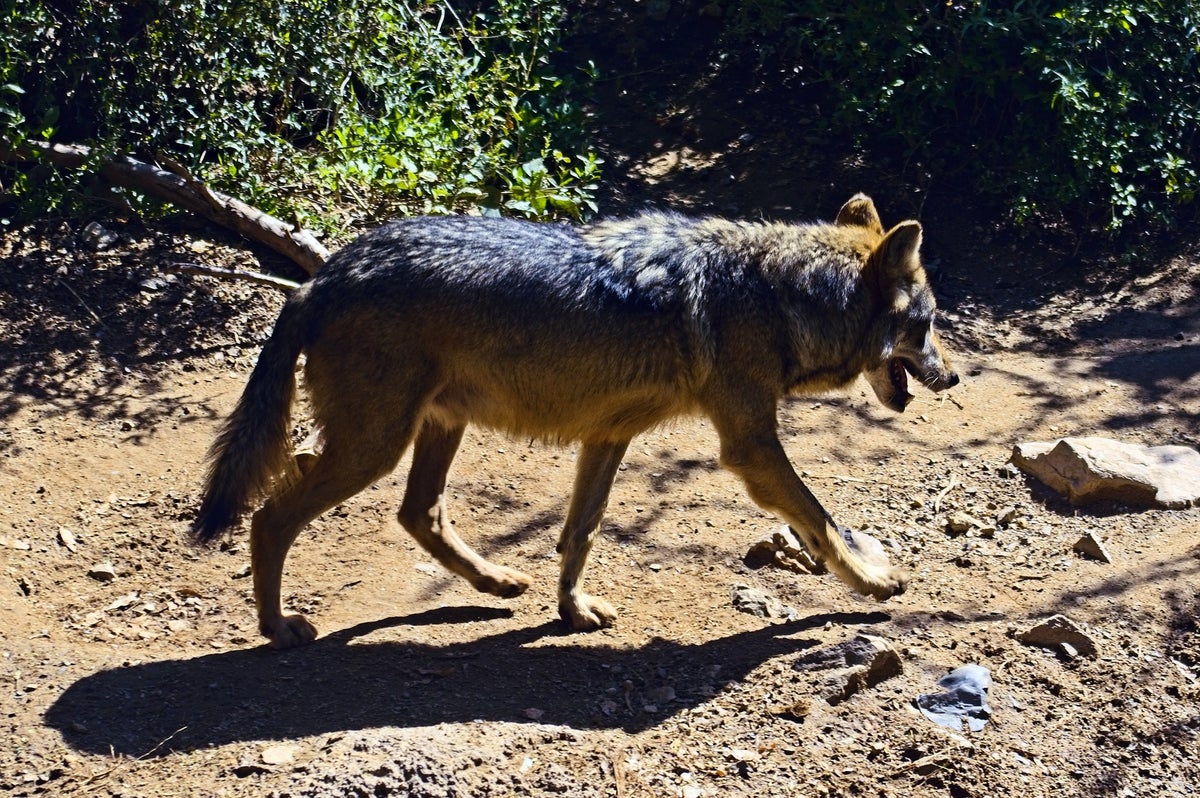
About 85% of the Arizona-Sonora Desert Museum is outdoors, consisting of botanical gardens, trails, and animal habitats. You’ll discover what makes the Sonora Desert so special, from its vibrant ecosystem supporting over 1,200 species of plants to the magnificent mountain ranges that provide a home to mountain lions and Mexican wolves. Discover ancient Arizona and the Sonorasaurus dinosaur whose fossils were found in the Sonora Desert and learn about geological formations in the Earth Sciences exhibit housed inside an artificial cave.
13. Discuss Art at the Tucson Museum of Art and Historic Block
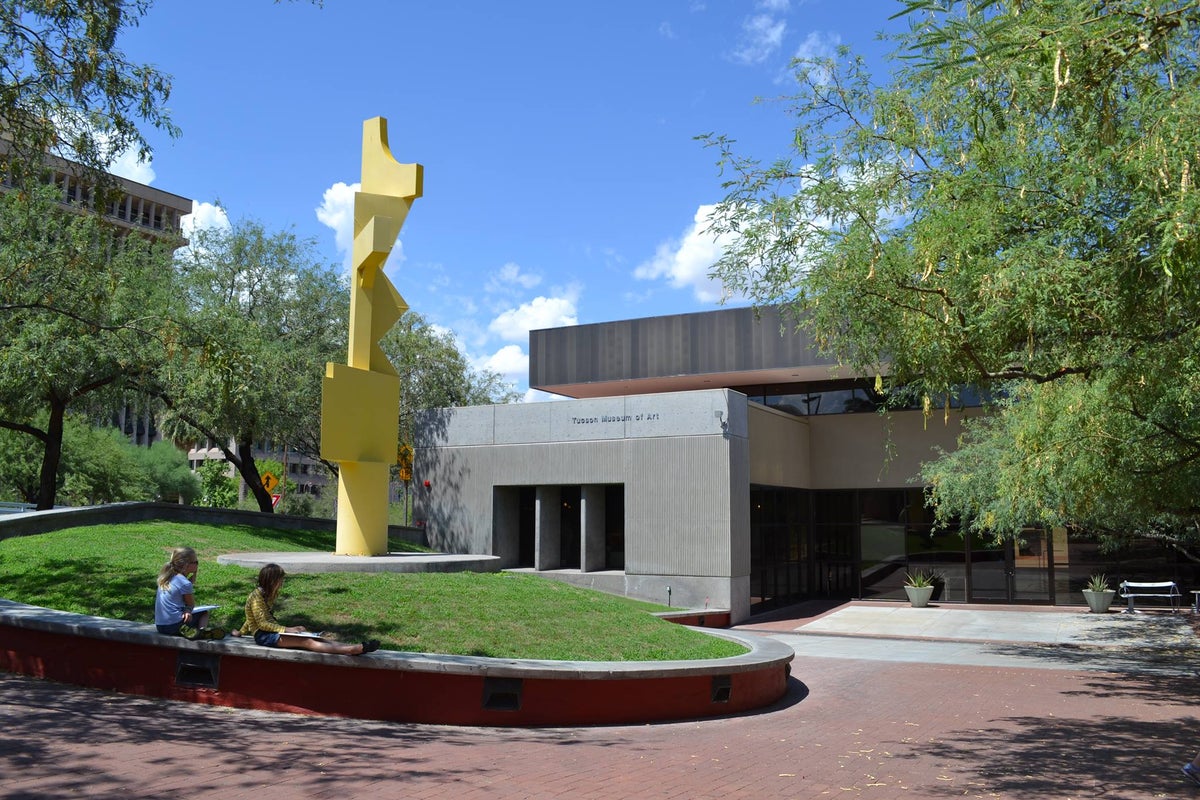
The Tucson Museum of Art and Historic Block consists of 1 main building and 5 19th century historic houses, occupying an entire block downtown. The museum features permanent and temporary exhibits, including modern and contemporary art and Asian, Latin, Western, and Native American art. Free tours are available with museum admission daily at 11 a.m. and 2 p.m., or join one of the Art on the Spot discussions for a short conversation about a particular piece.
14. Admire Colorful Paintings at the DeGrazia Gallery in the Sun Museum
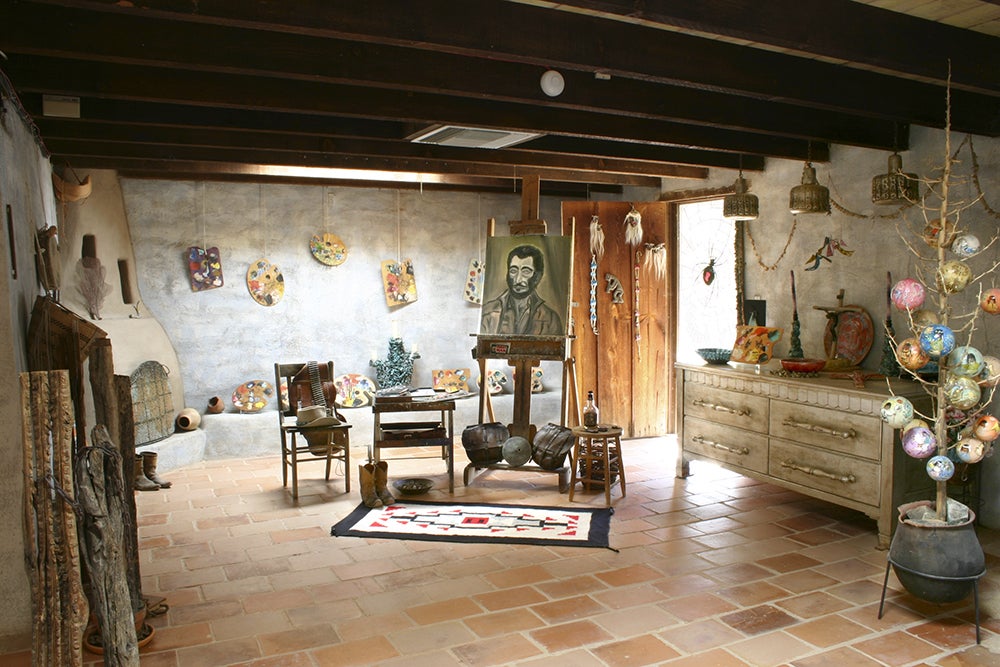
Ettore “Ted” DeGrazia was a world-renowned artist whose colorful paintings depicted the native cultures of the Sonoran Desert. His works are on display in the DeGrazia Gallery in the Sun Museum — originally the artist’s home — consisting of several adobe buildings. 6 exhibits display some of his most famous pieces, including “Los Niños” — a painting of 11 Native American children dancing, that UNICEF used on its holiday cards in the 1960s.
Hot Tip: Some of DeGrazia’s original work is available to purchase, in addition to a wide selection of reproductions in the gift shop.
15. Learn About the Cold War at the Titan Missile Museum
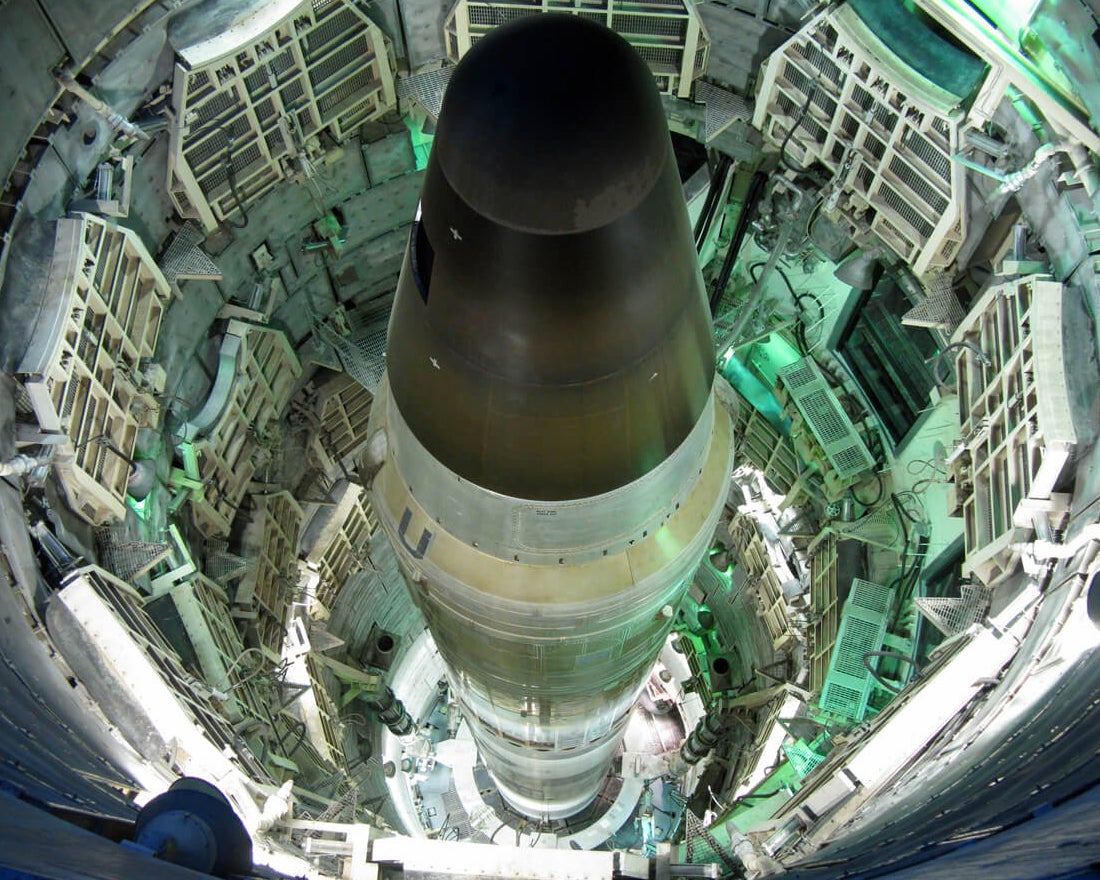
Of the 54 sites armed from 1963 to 1987 during much of the Cold War, the Titan Missile Museum is the only surviving Titan II missile launch site. Now open to the public, visitors can tour the underground complex to view (and even touch) a deactivated missile and the launch control center to experience a simulated missile launch.
16. Appreciate American and European Works at the University of Arizona Art Museum
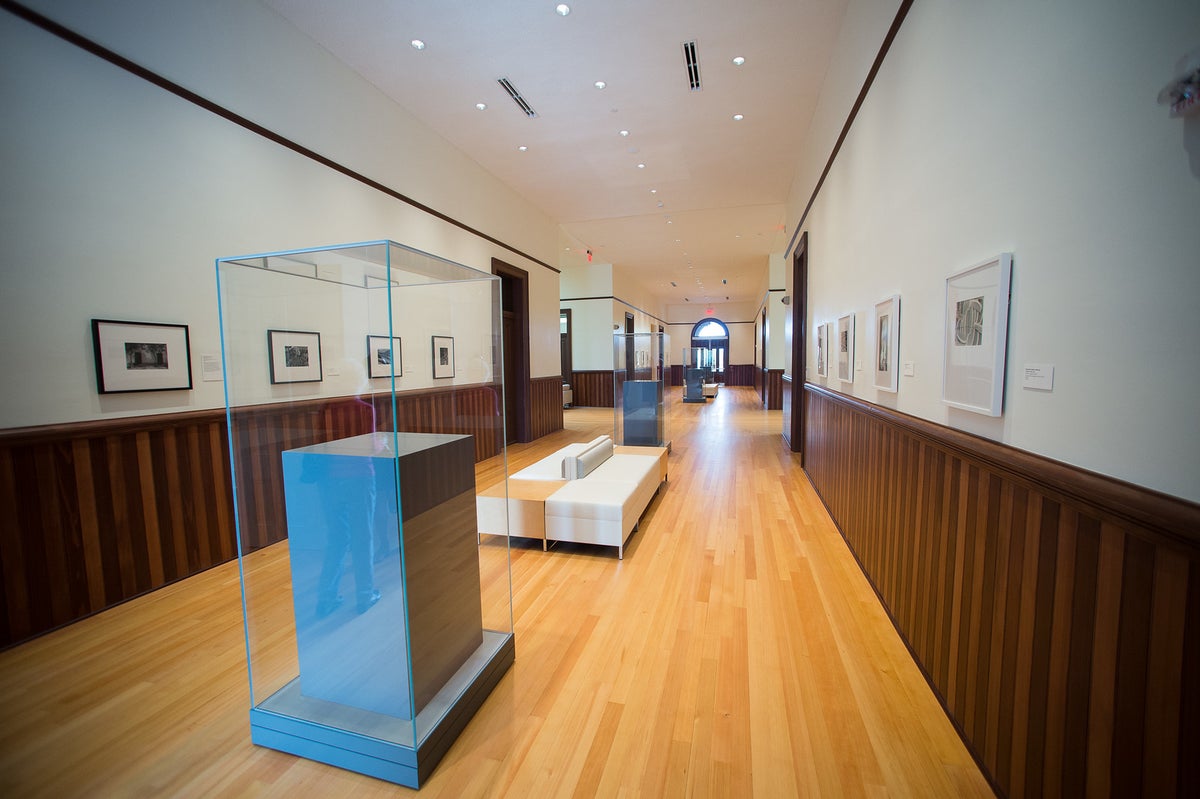
The University of Arizona Art Museum houses over 5,000 pieces that range from paintings to prints and sculptures to drawings, from the Renaissance through to contemporary works. The museum has permanent exhibits, including the Samual H. Kress Collection featuring European works from the 14th to 19th centuries and temporary exhibits that showcase the work of students and local artists.
17. Learn About the Earth’s Living Systems at Biosphere 2
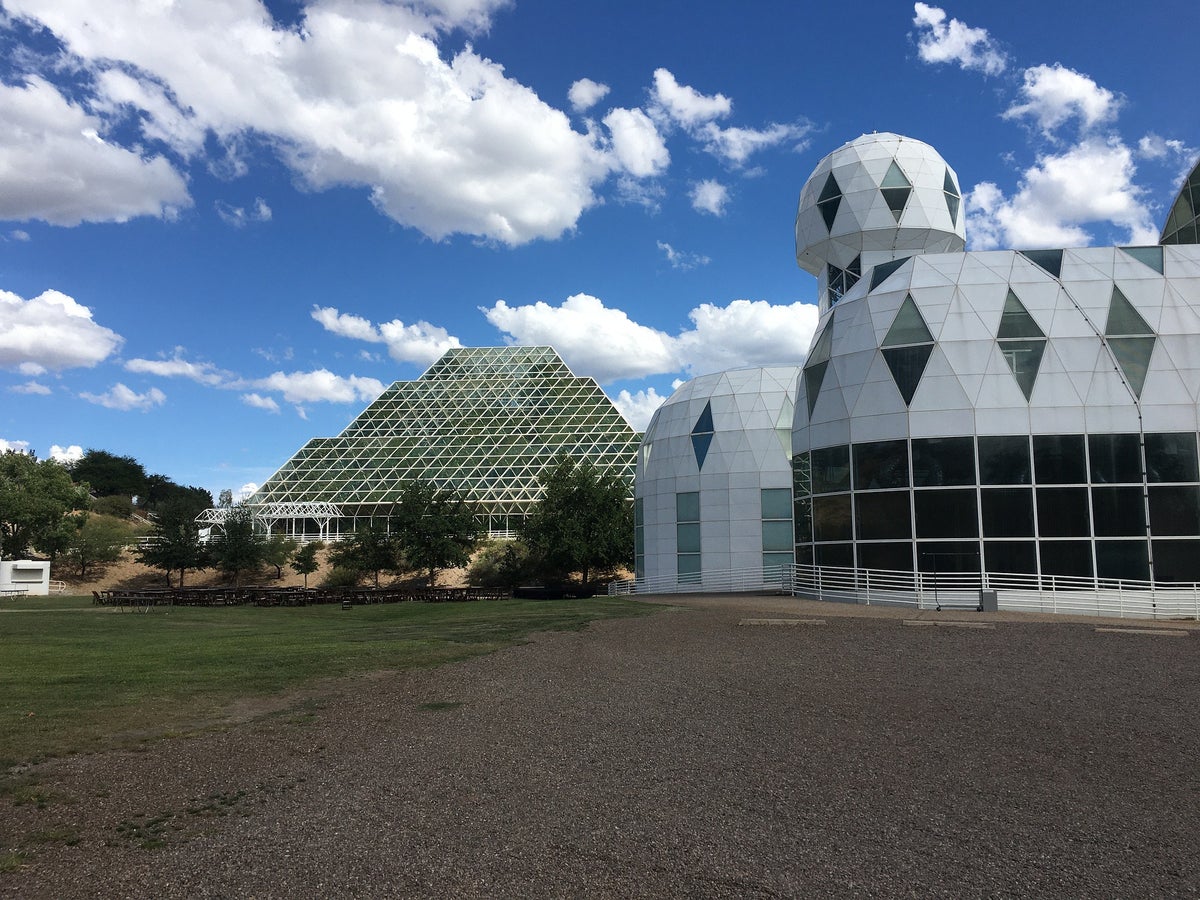
Biosphere 2 is a research facility managed by the University of Arizona that examines the earth’s living systems. In the 1990s, scientists conducted long-term live-in experiments investigating self-sustaining biospheres for space-colonization. Now, the facility welcomes visitors to explore the 7 different biomes, including a tropical rainforest, savanna grassland, fog desert, mangrove wetlands, and an ocean coral reef.
Hot Tip: Biosphere 2 has an interesting podcast where hosts interview a range of guests, including authors, scientists, and entrepreneurs, about the earth and its living systems.
18. Journey Back in Time at the Arizona History Museum
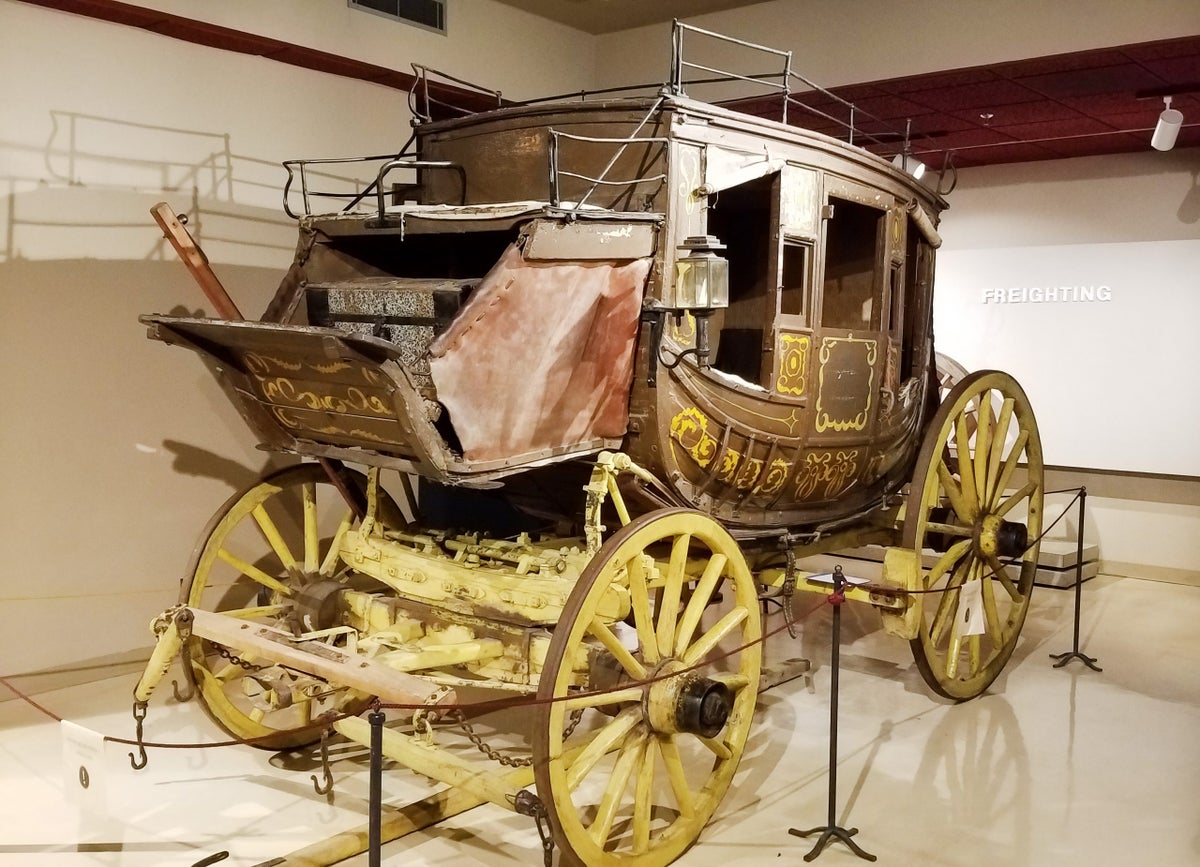
Journey back in time at the Arizona History Museum to discover stories and artifacts significant to Arizona’s deep history. Delve into the dangerous life of a miner as you explore an underground mining tunnel and check out a 2-story stamp mill. See how transportation evolved from horseback to horsepower with the development of historic trains and cars, and admire Emperor Maximilian and Empress Carlotta’s jewelry in the Treasures of Arizona exhibit.
The Best Things To Do in Tucson With Kids
19. Go Stargazing at Kitt Peak National Observatory
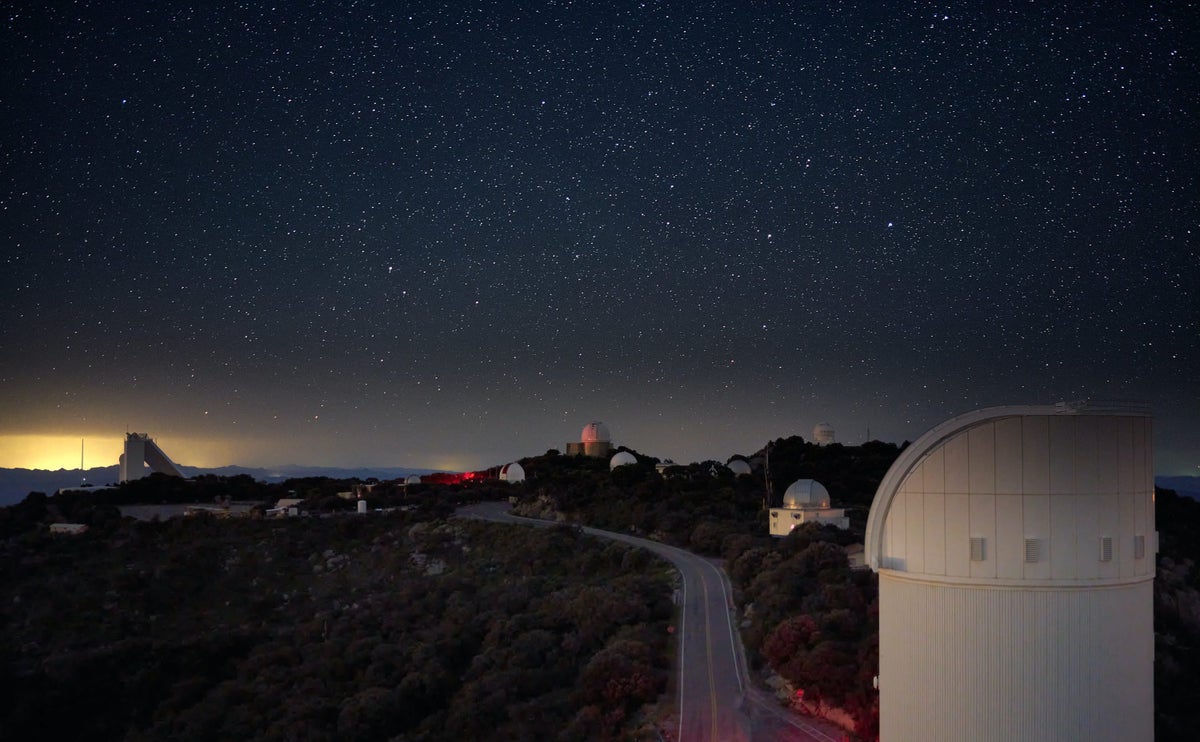
Situated at the highest point of the Quinlan Mountains, the Kitt Peak National Observatory offers far-reaching views of the Sonoran desert by day and spectacular views of the starry sky by night. The facility has more than 20 telescopes on-site, contributing to everyday analysis and discoveries in astronomy. Visit during the day and take a self-guided or guided tour of the observatory grounds or book a spot in the facility’s hugely popular nightly stargazing program.
20. Explore Deep Inside Colossal Cave Mountain Park
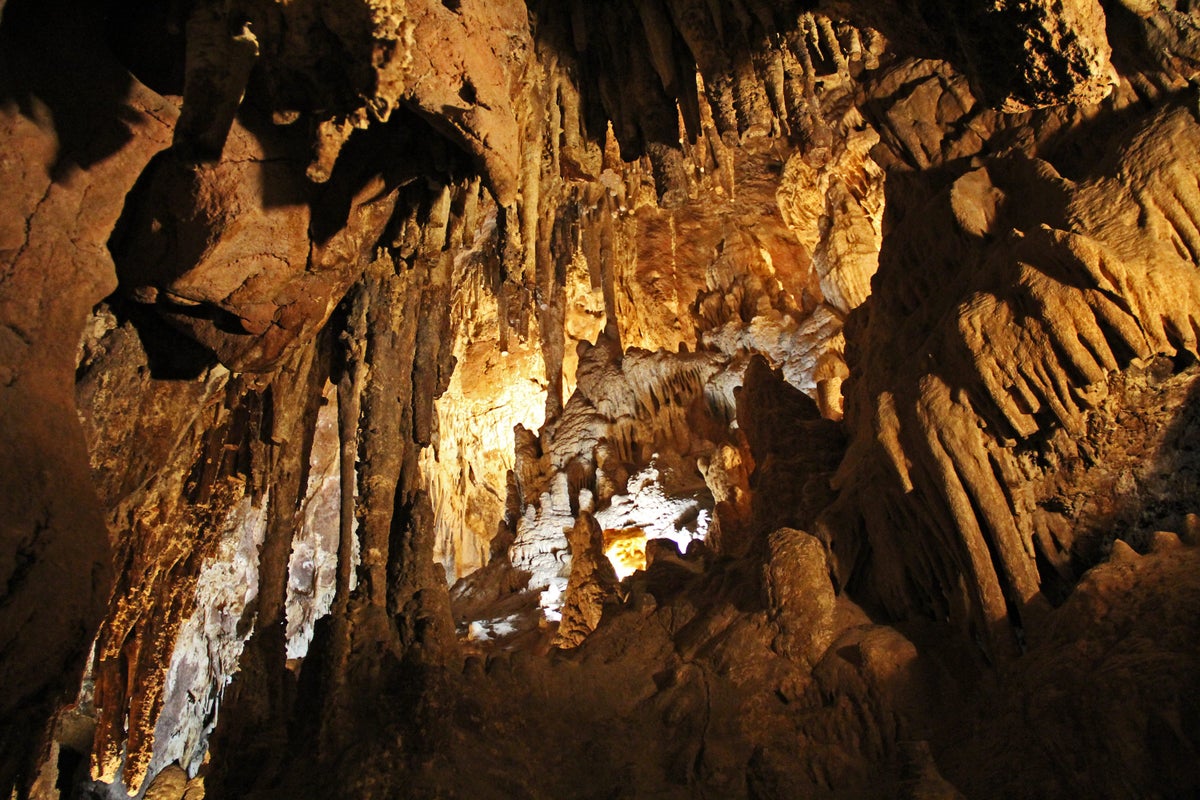
Colossal Cave Mountain Park is home to a huge cave system that is said to have once provided shelter for Native American tribes and acted as a hideout for train robbers. There are a few different cave tours depending on how adventurous you’re feeling. The classic tour is great for families, where you can learn all about the impressive geological formations before you or join the ladder or wild cave tours to crawl and climb through narrow passageways for deeper exploration.
Hot Tip: For those who prefer to stay above ground, the park is also an excellent location for biking, hiking, and horseriding.
21. Go on Safari at Reid Park Zoo
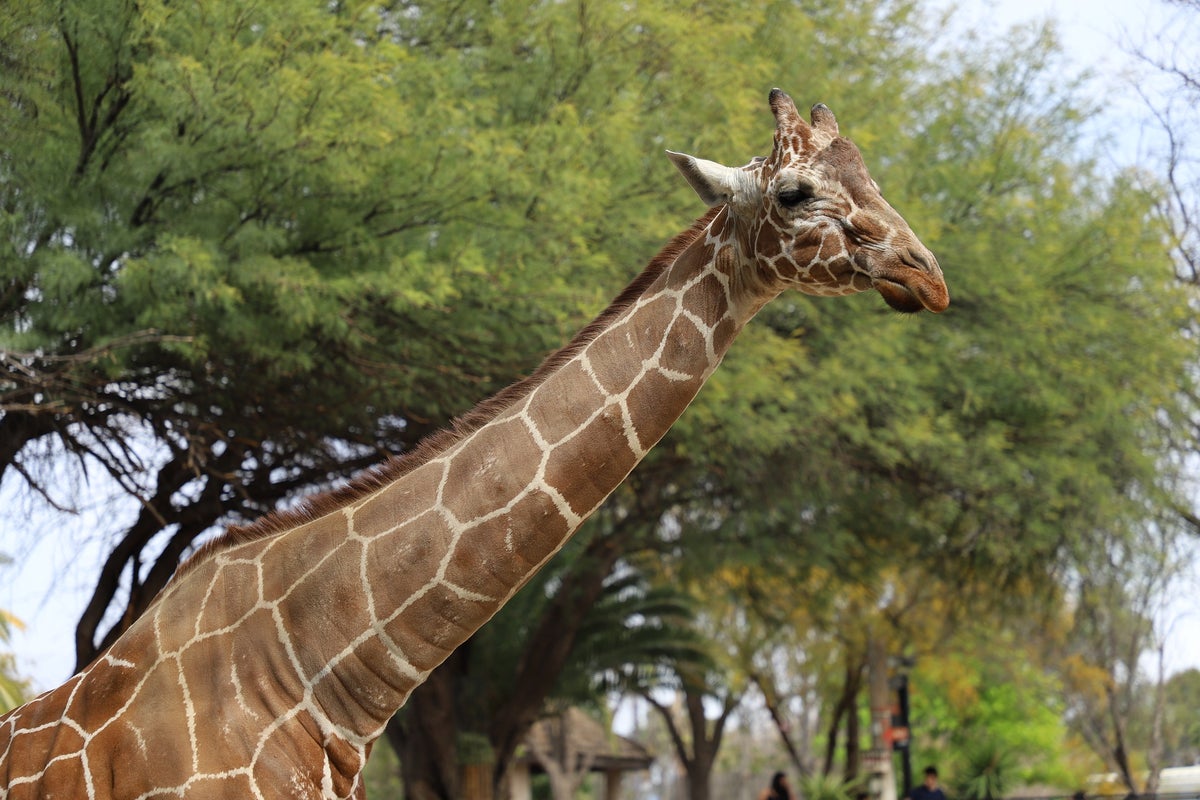
Founded in 1965 with just a few farm animals, Reid Park Zoo has grown to 24-acres and is now home to over 30 species. Lions, elephants, grizzly bears, flamingos, and capybara are just some of the residents you’ll see. The zoo is currently going through a 10-year expansion and renovation plan that will create larger enclosures for the animals, an African safari lodge for animal viewing, a treetop playground, and much more.
22. View World War II Aircraft at the Pima Air & Space Museum
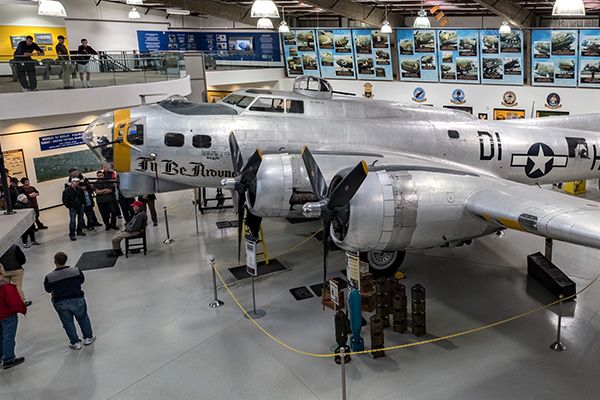
Aviation enthusiasts will love a trip to the Pima Air & Space Museum that features around 400 historic military and commercial aircraft. 4 hangars and outdoor exhibits display World War II aircraft, including the Curtiss P-40E Warhawk and Consolidated PB4Y-2 Privateer, as well as cargo planes, such as the “Super Guppy” that transported rocket parts for the Apollo Program.
Hot Tip: General admission also includes entry to the 390th Memorial Museum, a separate museum on the same grounds as the Pima Air & Space Museum.
23. Ride a Miniature Train at the Toy Train Operating Museum
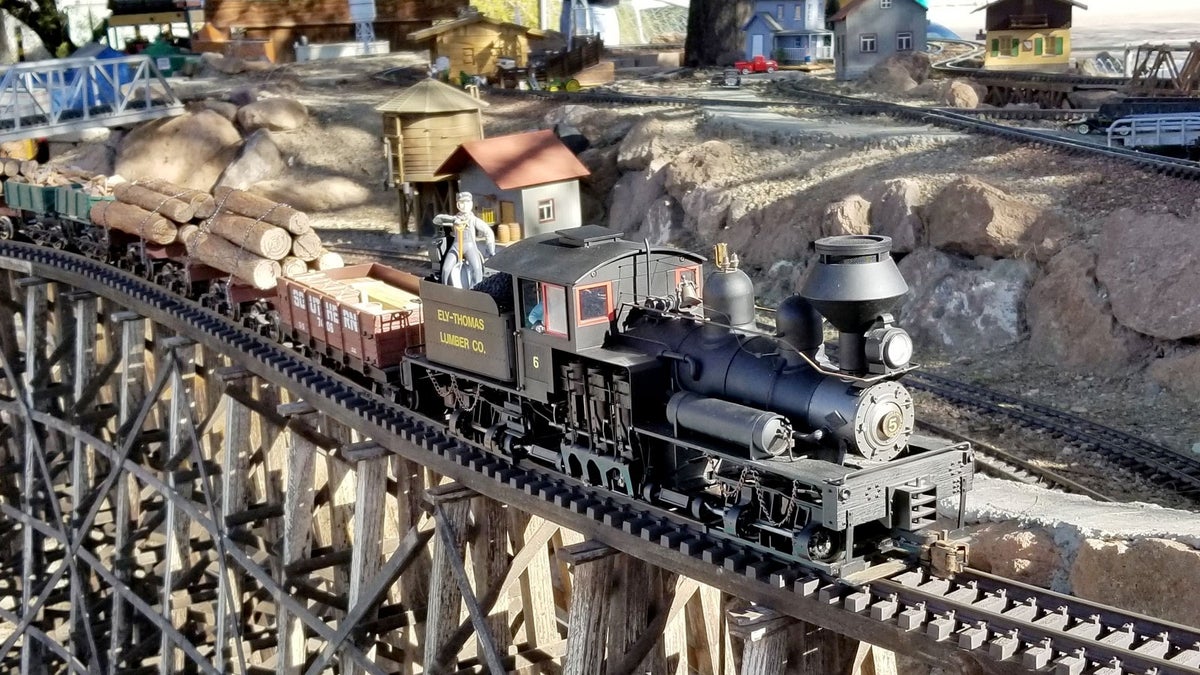
A great one for kids, or those with a love of trains, the Gadsden-Pacific Division Toy Train Operating Museum has model train exhibits managed and maintained by a group of volunteers. Model trains come in various scales, from a miniature Z-scale to a large 7.5-inch rail gauge train that you can ride on. The museum is free to visit, and guests are encouraged to interact and control many trains by pushing a series of buttons and levers.
The Best Events in Tucson
24. Listen to Live Music at the Tucson Folk Festival
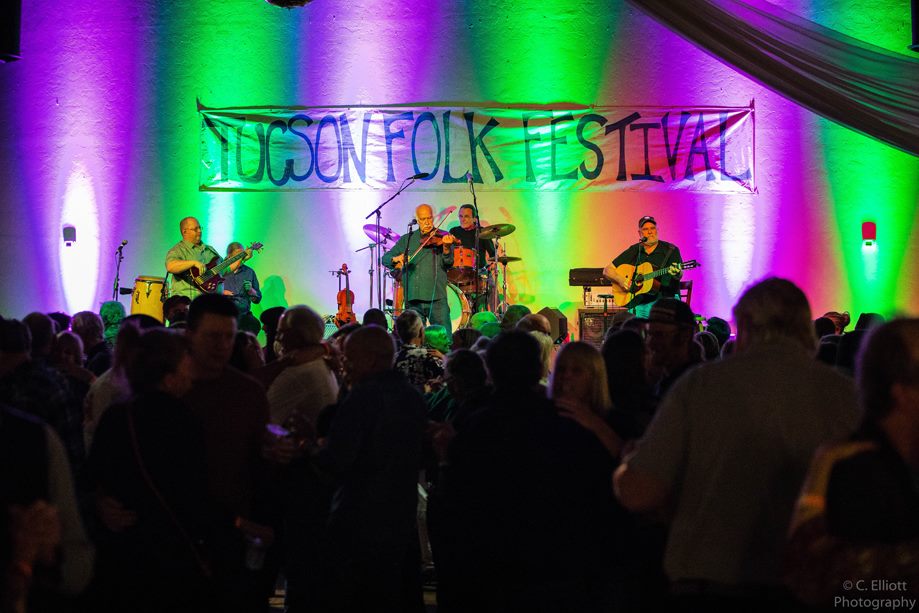
The Tucson Folk Festival is a free 2-day event that takes place annually in April. Musicians play a variety of blues, jazz, American bluegrass, country, zydeco, and Latin music across 5 stages in downtown Tucson. Visitors can participate in interactive music workshops and songwriting competitions and enjoy raffles and great food and drink.
25. Watch the Tucson Rodeo and Parade
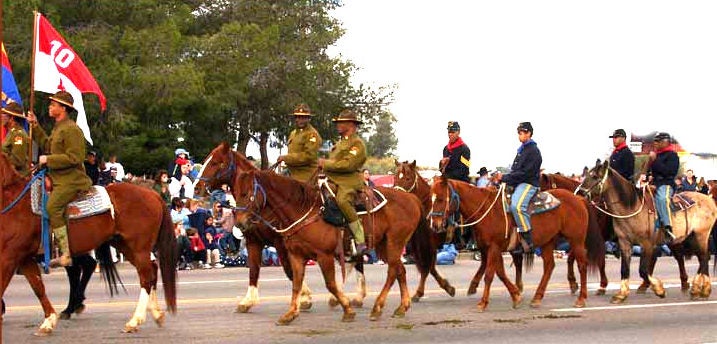
Dating back to 1925, the Tucson Rodeo and Parade is the largest non-motorized parade in the U.S. and recognizes Tucson’s ranching roots. Beautiful horses, outfitted riders, horse-drawn carriages, and folk dancers parade in front of more than 200,000 spectators. The parade route starts on Ajo Highway to Park Avenue, Irvington Road, and 6th Avenue, finishing at the Tucson Rodeo Grounds.
Final Thoughts
If exploring the great outdoors tops your list of vacation activities, you should definitely consider Tucson for your next city break. The city’s location between the 2 areas of the Saguaro National Park provides fairly flat desert on the west side and mountainous hikes within the Rincon Mountains to the east.

![25 Best Things To Do in Tucson [Free, Outdoors, Kid-Friendly]](https://10xtravelblog.com/wp-content/uploads/2021/03/Tuscon.jpg)